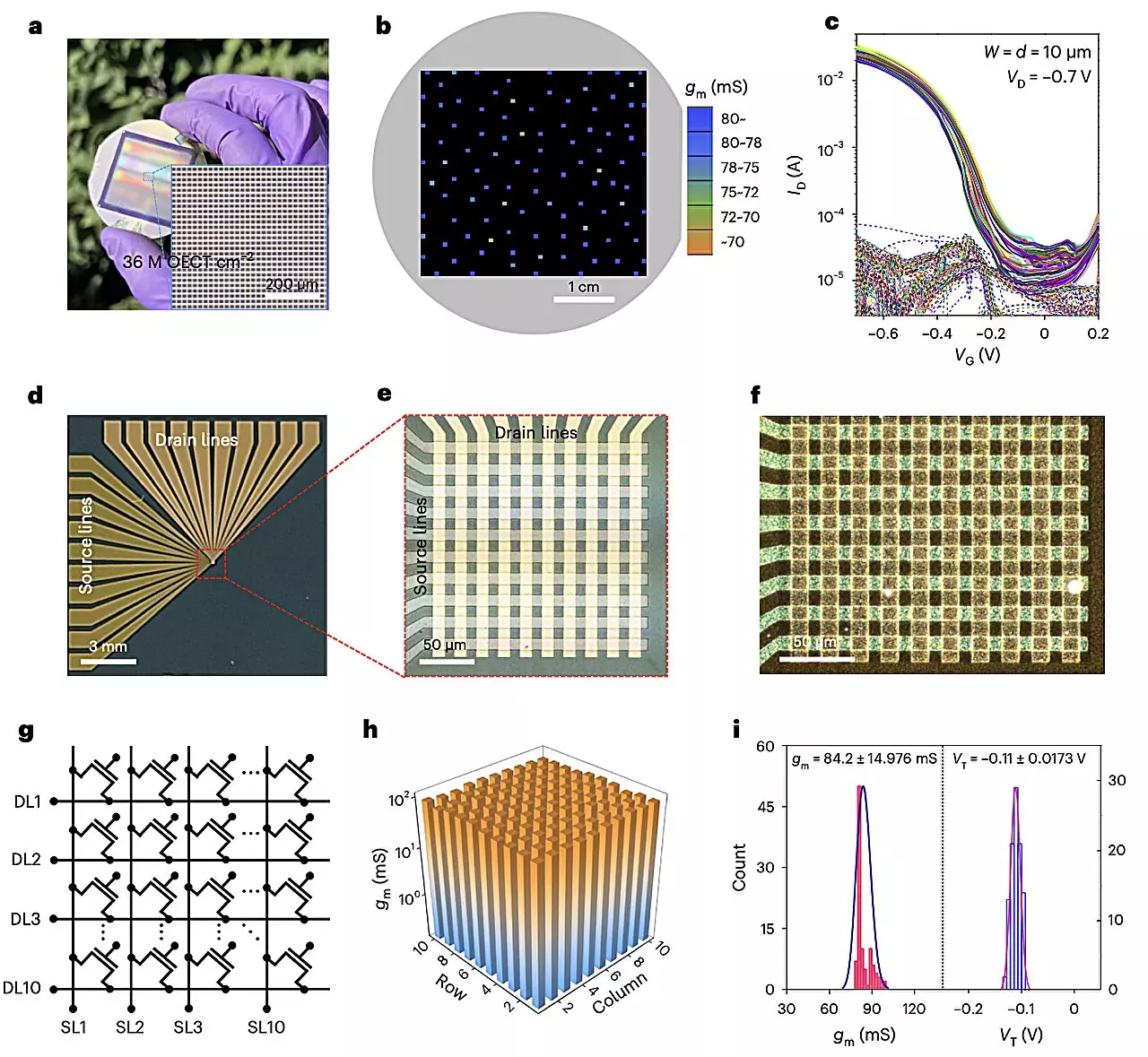Organic electrochemical transistors (OECTs) have been gaining attention as a promising class of transistors that offer unique advantages for various applications, such as biosensors, wearable devices, and neuromorphic systems. Despite their potential, traditional OECTs have faced challenges related to stability and slow redox processes. However, researchers at Northwestern University have recently introduced a novel fabrication strategy to address these limitations and enhance the performance of OECTs.
Kim, Pankow, and their colleagues at Northwestern University utilized electron beam lithography (eBL) to fabricate high-density and mechanically flexible OECTs. By exposing organic semiconductor films to a direct beam of electrons, they were able to pattern the films without the need for masks or chemical solvents, which could potentially damage the materials. This resulted in ultra-small, high-density OECT arrays with well-defined conducting channel regions. The eBL strategy also enabled the effective multilayer integration of OECT structures into circuits, showcasing promising transconductances and stable switching properties.
The fabricated OECT arrays demonstrated transconductances ranging from 0.08 to 1.7 S, transient times of less than 100 µs, and stable switching properties of over 100,000 cycles. Additionally, the researchers successfully implemented vertically stacked logic circuits, including NOT, NAND, and NOR gates, showcasing excellent operational stability. This new fabrication strategy not only improves the stability and performance of OECT circuits but also paves the way for scalable manufacturing, facilitating the integration of OECTs into electronic devices.
The recent study by Kim, Pankow, and their colleagues opens up new possibilities for the development of advanced OECT-based technologies. By overcoming the limitations of traditional OECTs through innovative fabrication methods, researchers can explore new applications in brain-inspired computing, flexible electronics, and sensor technologies. The e-beam exposure strategy introduced in this study could serve as a blueprint for future research endeavors aimed at enhancing the functionality and reliability of OECTs.
The development of high-density and mechanically flexible OECTs through eBL represents a significant advancement in the field of organic electronics. By leveraging innovative fabrication techniques, researchers can harness the full potential of OECTs for a wide range of applications, from wearable devices to neuromorphic systems. The future of organic electrochemical transistors looks bright, thanks to pioneering research efforts that push the boundaries of what is possible in electronic device fabrication.


Leave a Reply